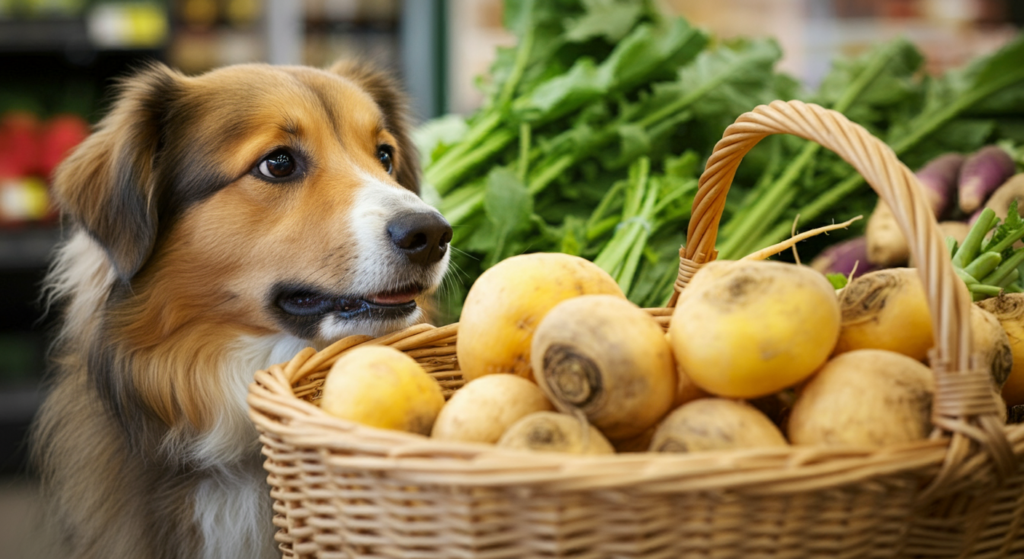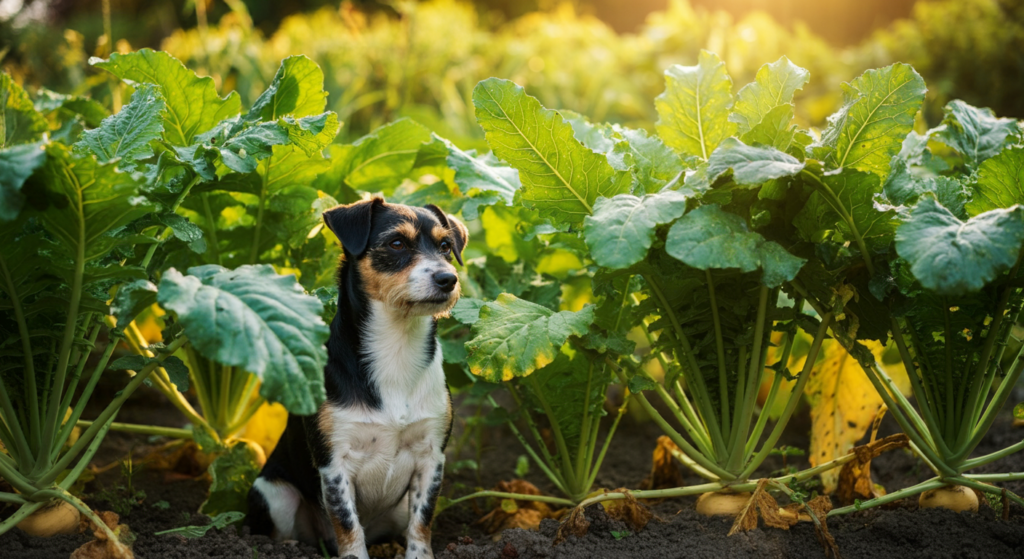Can dogs eat swede?
Can dogs eat swede? Swede or Seed of Doubt? A Look at Dogs and Rutabagas!
As responsible pet parents, we’re always mindful of what goes into our dogs’ bowls. With so many human foods carrying hidden risks, it’s only natural to second-guess sharing even the simplest ingredients. Swede, also known as rutabaga, is a popular winter vegetable in many households. But is it a safe treat for your four-legged friend? Let’s explore the facts to help you decide.
Yes, dogs can eat swede, and it can even be a healthy addition to their diet when prepared correctly. Swede is safe for dogs as long as it’s cooked, plain, and served in moderation. However, as with any new food, there are precautions to consider. Let’s explore the potential benefits and risks to ensure you’re making the best choice for your dog’s health.
Table of Contents
- Can dogs eat swede? Swede or Seed of Doubt? A Look at Dogs and Rutabagas!
- What Is Swede?
- Can Dogs Eat Swede?
- What Are the Benefits of Swede for Dogs?
- Are Swedes Bad for Dogs?
- What Are the Dangers of Dogs Eating Swede?
- How to Safely Prepare Swede for Dogs
- How Much Swede Can Dogs Eat?
- Fun Facts About Dogs and Swede
- Conclusion
- Can Dogs Eat Swede? FAQ
What Is Swede?
Swede, or rutabaga, is a root vegetable that belongs to the brassica family, alongside turnips and cabbages. It’s often used in soups, stews, or mashed as a side dish. Known for its sweet and earthy flavour, swede is rich in nutrients like fibre, vitamins, and minerals.
For humans, swede is a versatile and nutritious food. But for dogs, it’s important to consider preparation and portion size before incorporating it into their diet.
Can Dogs Eat Swede?
The simple answer is yes, dogs can eat swede. When cooked and served plain, swede is safe and can offer some health benefits to your dog. Raw swede, however, is harder for dogs to digest and may cause stomach upset, so it’s best avoided.
What about mashed swede? Yes, as long as it’s free of added butter, salt, or seasonings, mashed swede can be a tasty and safe treat for your dog.

What Are the Benefits of Swede for Dogs?
Swede can provide a range of nutritional benefits when served properly. While not essential to a dog’s diet, it’s a healthy, low-calorie treat that can complement their regular meals. Here are some potential benefits of swede for dogs:
1. Rich in Fibre
Swede is high in dietary fibre, which can support healthy digestion and help regulate bowel movements. This can be especially beneficial for dogs prone to constipation.
2. Low in Calories
As a low-calorie vegetable, swede makes an excellent treat for dogs who need to maintain a healthy weight. It’s a filling snack that won’t add unnecessary calories to their diet.
3. Vitamin C
Swede contains vitamin C, an antioxidant that supports immune function and helps fight free radicals in your dog’s body. While dogs naturally produce vitamin C, additional sources can still be beneficial.
4. Source of Potassium
Potassium is essential for muscle function, nerve signals, and maintaining proper hydration levels. Swede provides a healthy dose of this vital mineral.
5. Supports Healthy Bones
Swede contains small amounts of calcium and magnesium, which contribute to bone health. While not a primary source of these nutrients, swede can still support overall skeletal strength.
6. Anti-Inflammatory Properties
Swede’s natural compounds may help reduce inflammation, particularly in older dogs or those with joint issues.
Are Swedes Bad for Dogs?
In moderation, swede is not bad for dogs. However, excessive consumption or improper preparation can lead to issues such as digestive upset. Raw swede is particularly hard for dogs to digest and can cause bloating or gas.
Are swedes bad for dogs if they’re seasoned? Absolutely. Ingredients like salt, butter, or spices can be harmful to dogs and should always be avoided.
What Are the Dangers of Dogs Eating Swede?
While swede is generally safe, there are some risks to be aware of:
1. Digestive Upset
Eating too much swede or consuming it raw can lead to symptoms like:
- Diarrhoea
- Vomiting
- Gas or bloating
2. Choking Hazard
Large chunks of swede can pose a choking risk, especially for small dogs. Always cut the vegetable into bite-sized pieces before serving.
3. Allergic Reactions
Though rare, some dogs may be allergic to swede. Signs of an allergic reaction include:
- Itching or scratching
- Swelling of the face or paws
- Difficulty breathing
Tip: Introduce swede slowly and monitor your dog for any unusual reactions.
4. Excessive Fibre
While fibre is beneficial, too much can cause diarrhoea or loose stools. Moderation is key.
How to Safely Prepare Swede for Dogs
- Cook It: Boil, steam, or bake swede until it’s soft. Avoid frying or adding fats.
- Keep It Plain: Do not add salt, butter, or seasonings.
- Mash or Chop: Serve it as a mash or in small, manageable pieces to prevent choking.
- Start Small: Offer a small amount first to see how your dog reacts.
How Much Swede Can Dogs Eat?
Portion control is important. For small dogs, a tablespoon of cooked swede is enough, while larger dogs may enjoy up to ¼ cup. Always consult your vet if you’re unsure about the appropriate serving size.

Fun Facts About Dogs and Swede
- Swede is sometimes used as a filler ingredient in homemade dog food recipes due to its nutritional profile and low-calorie content.
- Some dogs love the sweet taste of cooked swede, while others might need a bit of encouragement to try it.
- Did you know swede is often used as livestock feed? It’s a hearty vegetable that even your dog can safely enjoy when prepared properly.
Conclusion
So, can dogs eat swede? The answer is yes, with precautions. Cooked, plain, and served in moderation, swede can be a healthy and tasty treat for your dog. Avoid raw or seasoned swede, and always introduce new foods gradually. If you’re ever in doubt, consult your veterinarian. Have you tried giving your dog swede? Share your experience below!
Can Dogs Eat Swede? FAQ
Can dogs eat swede raw?
Yes, dogs can eat raw swede in small, manageable pieces. However, it can be tough to chew, so ensure it’s sliced thinly to prevent choking.
Can dogs eat swede cooked?
Absolutely! Cooked swede is softer and easier for dogs to digest. Avoid adding butter, salt, or seasonings when preparing it for your dog.
Can dogs eat swede skin?
While the skin isn’t toxic, it can be tough and hard to digest. It’s better to peel the swede before offering it to your dog.
Can dogs eat swede mash?
Yes, dogs can enjoy mashed swede as long as it’s plain, without added salt, butter, or spices.
Can dogs eat swede leaves?
Swede leaves are safe but should be offered in moderation. Wash them thoroughly to remove any dirt or pesticides before serving.
Can dogs eat swede and turnip?
Yes, dogs can eat both swede and turnip in moderation. They are similar root vegetables that provide fibre and nutrients, but keep portions controlled to avoid digestive upset.
Can dogs eat swede seeds?
No, it’s best to avoid giving swede seeds to dogs. Seeds can pose a choking hazard or cause digestive issues.
Can dogs eat swede and carrot together?
Yes, swede and carrot can make a nutritious combination for dogs when served raw in small pieces or cooked plain.
Can dogs eat swede UK?
Yes, whether in the UK or elsewhere, swede is safe for dogs when prepared appropriately—raw in small pieces or cooked without additives.
Can puppies eat swede?
Puppies can eat swede in moderation, but it should be cooked and mashed to make it easier for their developing teeth and digestive systems. Always introduce new foods gradually.
